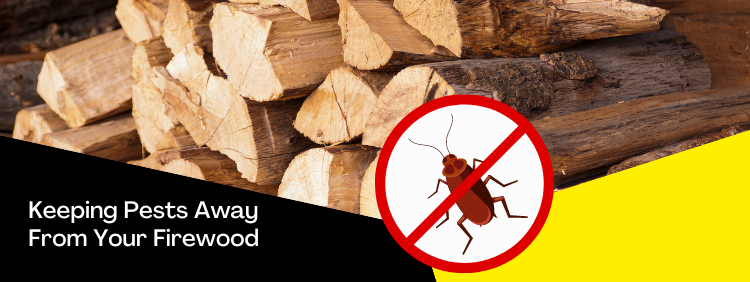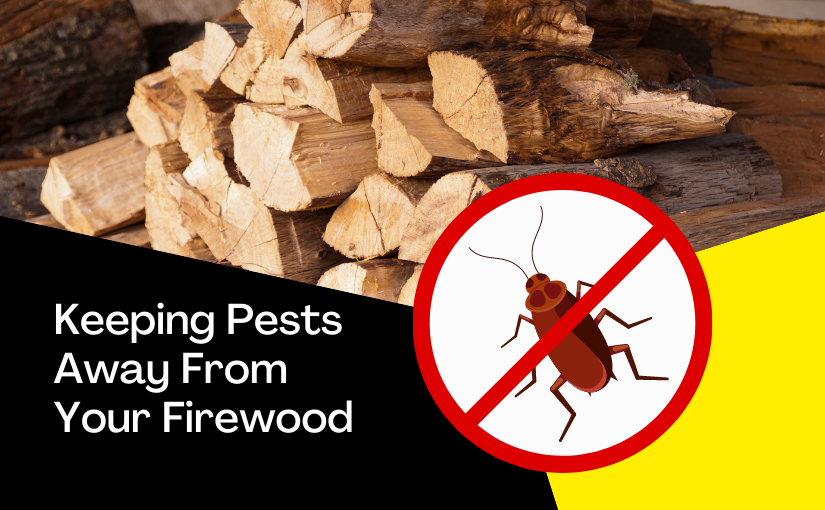
Due to the decrease in outside temperatures, fall and winter are seasons when the use of fireplaces and wood-burning stoves increase. Unfortunately, this is also the height of pest season, during which insects and rodents especially are looking for places to spend the cold winter months. Your woodpile may present itself as an attractive shelter at first. From there, pests may find a way into your house, either by themselves or with some unwitting help from you. Either way, insects and rodents may find that your home is an upgrade and settle in. An infestation may require residential pest control in Burlington to deal with, but there are things you can do to keep pests away from your woodpile and out of your home in the first place.
1. Store Firewood off the Ground
Elevating your woodpile by even a few inches can help prevent it from becoming infested in several different ways. When the wood is not in contact with the ground, the path by which pests can crawl up into it becomes less direct and more difficult to traverse. Insects are also attracted by excess moisture, but elevating your woodpile helps to prevent it from accumulating by improving the airflow. You can prevent the wood from contacting the ground by stacking it on top of bricks, repurposed firewood grates, or concrete blocks.
2. Don’t Store Firewood Indoors
If you’re thinking about using a wood-burning stove or fireplace, it probably means the weather outside is cold. You might think that you can save yourself a chilly trip if you store your firewood indoors somewhere, such as on a porch or in your basement. However, the firewood may already be infested by the time you bring it home. If you store it somewhere inside the house, you are essentially inviting pests to make themselves at home as well as providing a home for new ones. Store the firewood outside and only bring it in when you are ready to burn it, which you should do immediately.
3. Store Firewood Away From Buildings
It is not enough to stack firewood outside if it is still in contact with your home. Firewood may be infested with wood-boring pests. If it is stacked against the side of your house, the insects can easily extend their tunnels from the woodpile into your home. Even a distance of three feet presents a barrier that these insects cannot overcome easily. However, if you are worried about rodents in your woodpile, you should increase the distance from the house to up to 30 feet.
4. Inspect Firewood Before Bringing It Inside
Before bringing firewood into the house, look over the surface for any evidence of pests. If there are insects on the wood, you should be able to remove them by knocking the logs together or shaking them before bringing them into the house. This helps you avoid bringing any uninvited guests into the house.
Do you use a carrier to bring wood inside? If so, avoid setting it on the ground, if possible, and check the bottom of it for pests before bringing it back into the house.
5. Use the Oldest Wood First
Firewood should be used in the order that you acquired it, so that the logs you cut or purchased first take precedence over newer logs. This may require you to restack the woodpile occasionally so that the oldest logs are more accessible, but it’s more efficient than constantly burning new logs while the ones on the bottom attract pests.
Residential Pest Control in Burlington From Truly Nolen
Vigilance in following these tips can help prevent pests from getting into your home via firewood. Nevertheless, if you discover an infestation anyway, contact Truly Nolen for professional home pest control.
